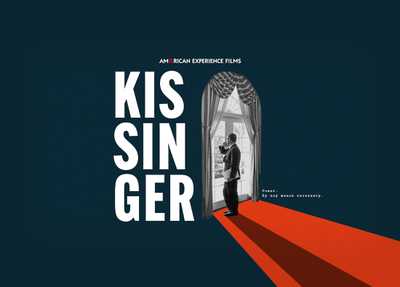How Polaroid Captured Cool
The iconic brand’s square frame and white border inspired generations of popular culture

From the release of the first instant camera in 1948—a bulky, accordion-style apparatus that sold for what would be around $1,600 today—the culture was forever changed. Suddenly, photography was intimate and spontaneous—and equally important, fun. In the decades to follow, instant cameras became popular tools for artists, celebrities, and even politicians; a Polaroid was as coveted as the iPhone would be half a century later.
Let’s look back at some of the most significant cultural moments influenced by the iconic camera since its debut.
Polaroid in Art

In 1977, British artist David Hockney painted his most frequent subject, artist and author Peter Schlesinger, together with a Polaroid camera on a tripod. Hockney, who originally was skeptical about the use of photography in fine art, would begin creating celebrated collages assembled from Polaroid prints in the 1980s.

American artist Chuck Close began using photography intensively after becoming partially paralyzed in 1988. Here Close works on a painting based on a portrait of the photographer Andres Serrano, taken with a special large-format Polaroid camera colloquially called the Big Shot. Gordon M. Grant/Alamy Stock Photo.

American artist Andy Warhol embraced Polaroids for their candid, raw potential, using the cameras to inform his creative process (and famously capturing many of his famous friends). Warhol is pictured here with the Polavision camera, an instant home movie system released in 1977. Despite its innovative technology, Polavision's impracticality—the films were silent, and could only be viewed on a special companion viewer that looked like a miniature CRT screen—made it a commerical failure. Nonetheless, even Polaroid's unpopular products still had celebrity cachet. Bernard Gotfryd/Library of Congress.
Polaroid in Politics

Warhol and friend Bianca Jagger sit on the Truman Balcony of the White House in July 1975, where the artist trained his Polaroid on Jack Ford, the president’s son.

First Lady Betty Ford got in on the fun as well, snapping a photo of the official White House photographer with the SX-70 camera. "SX-70 is the first of the Polaroid cameras that uses the format that we all recognize as Polaroid now," says Christopher Bonanos, author of Instant: The Story of Polaroid, "the white tab at the bottom that spits out the front of a motorized camera, that picture. Before that, everything required a pull tab and a peel and a timer. This camera just came out and did its thing. And the photo developed in full sunlight, which was completely unheard of." The model still retains a cult following today.

On November 22, 1963, 31-year-old housewife Mary Moorman took this image of President Kennedy’s assassination with her Polaroid model 80A Highlander camera. Visible on the grassy knoll across from Moorman is Abraham Zapruder, who famously captured footage of the same event.
Polaroid in Music

The Supremes—from left to right, Florence Ballard, Mary Wilson, and Diana Ross—each wielding a Polaroid in October 1965, photographed at the London Airport after arriving to appear on the British television programs “Ready Steady Go” and “Thank Your Lucky Stars.”
Outkast’s “Hey Ya,” written by lead singer Andre 3000 and released in 2003, paid homage to the Supremes aesthetic, 50 years later. The pop hit’s famous breakdown section—”Shake it like a Polaroid picture”—prompted an acerbic press release from the Polaroid corporation, warning the public that “shaking or waving can actually damage the image.” Turns out, though, that there’s a good reason why everyone still does it…
Even decades after Polaroid declared bankruptcy in 2008, its aesthetic remains influential, revived through apps and digital filters that mimic its vintage charm. In this way, the company’s legacy continues to echo in how people document life and identity in the digital age.







